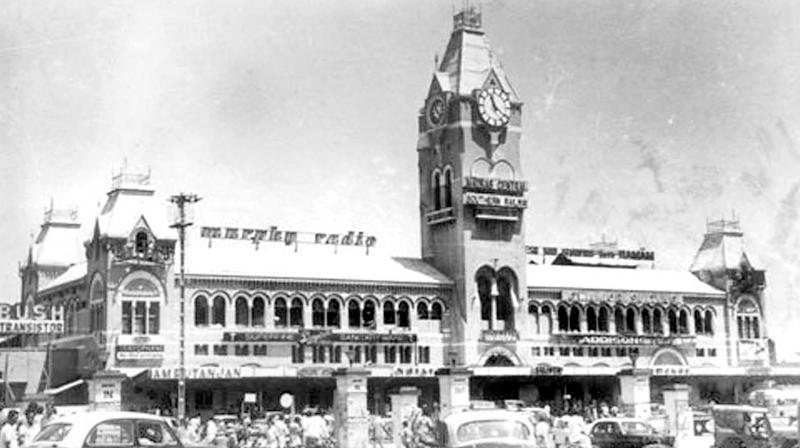Those were the days we thought world never end
The Pallavas gave the region close to the city its most famous temples on the beach, of which just one remains.

It is that time of year when waves of Madras nostalgia descend on us as we prepare to celebrate the city’s birthday. Beginning with the advent of the East India Company to these shores may give us a shorter history of the city, but it carries certain convenience as the era is, perhaps, better recorded. The “pattinam’ itself goes back a long way, but for most part today’s metropolis would have been a sleepy cluster of fishing villages. Even the city’s artificial harbour is much younger and had nought to do with the early seafaring conquests of the Cholas who ruled way further south.
The more important place in the region in early history was Kancheepuram which was ruled by a representative of the Chola family, then taken over by the Satavahanas from Andhra and then went to the Pallavas before being ruled once again by the Cholas in their ninth and 10th century heyday. The Pallavas gave the region close to the city its most famous temples on the beach, of which just one remains.
 The Tiruvarur chariot sculpture at Valluvar Kottam.
The Tiruvarur chariot sculpture at Valluvar Kottam.
It’s always a gripping trip into history to go to Mahabalipuram once in a few years to marvel at the architecture of the temple and the rock carvings. You get a real feel of what the place would have been like before the fishing villages with a few famous temples built more than 1,000 years ago started metamorphosing into its modern avatar of Chennai. The rock carvings are very intricate and indicative of a mastery of working with big stone, a hallmark of much of the ancient temple architecture of the region.
The Valluvar Kottam harks back at the era gone by, its temple chariot shape rising to nearly 40 metres and modelled on the Thiruvarur temple ‘ther’. It’s one of the few reminders of a time when a city older than its British period is recalled. The Grand Chola hotel on Mount Road of today manages to recapture the sheer elegance of stone work in its exteriors as its architects sought and found a niche that combines nostalgia with the modern. Much of the rest of the city architecture on a large scale sticks to the Indo-saracenic style made popular by Chisholm and Irwin and carries the distinct stamp of Madras.
It is commonly believed that the agreement to buy a sliver of land or sand where the Fort St George stands was transacted by Francis Day and Andrew Cogan, through the good offices of the ‘dubash’, Beri Thimmappa, with the local Nayak rulers on August 22, 1639. It’s nice to have been able to pinpoint a particular day on which a city could have been said to have been founded. The city’s entry into the more modern era was marked by the arrival of the British, which makes Madras-Chennaiunique as the first foreign influence came much later than in the north where the Mughals had ruled.
You could cut a cake on Tuesday for Madras / Chennai firm in the knowledge that the day had a lot to do with changing history although we have far less reason to venerate the British rulers of the city, particularly the likes of Lord Robert Clive who pillaged like a man possessed. The hair-raising tale of a single man’s plunder probably finds an echo only in the most modern era in which a couple of Dravidian parties were said to have revived the Clive touch of ‘take and take’ and for 50 years we have been in this particular era of ruler wealth at the expense of the people.
The 1960s were a different era in which the city was very much old Madras. The trams ran through the main arterial roads and were a fun ride at stately speed, a trip from the Royapettah tram shed to Central Station and back being the highlight of early forays into the delights of discovering a city. Barges carrying timber would float on the Buckingham Canal with the ‘gondoliers’ of Madras using very long bargepoles to do the steering.
Rowers passing the outrigger test and going on to the Adyar river in sculls would be dunked in the water in celebration after their maiden row. The ‘dunking ceremony’ would be considered injurious to health these days considering how grossly polluted the water is. The sands of the Marina were pristine, the popular ‘kuchi’ ice sellers standing on the periphery or on the footpaths around the Gandhi statue. The breeze could be your companion all the way on the walk back home because the city wasn’t built up like it is now.
No amount of nostalgia is going to bring back the “Those were the days, my friend” kind of imagery about the city that hosted our childhood. But modern Chennai has its delights to offer too, as well as the connectivity of a modern city, although it seems to be taking an enormous time to get the Metro going over a greater part of the city. When will a passenger getting off the train at Central ever take a ride to the Airport on the Metro hassle-free as we would from Heathrow to Central London?

